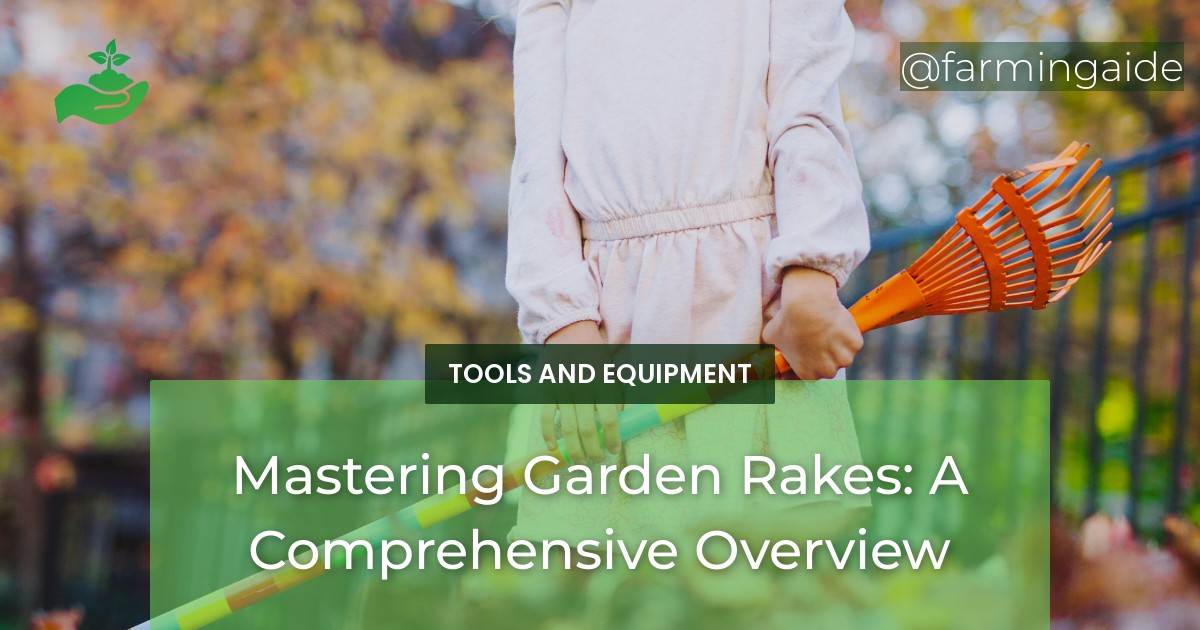Garden rakes are essential tools for maintaining a beautiful and healthy garden. Whether you’re raking leaves, leveling soil, or removing debris, having the right garden rake can make the task easier and more efficient. In this comprehensive overview, we will explore the different types of garden rakes and their functions, as well as provide tips on selecting the best rake for your needs. We will also discuss techniques for efficient garden raking, common mistakes to avoid, and how to extend the lifespan of your rake. Additionally, we will delve into innovative designs and technologies that have revolutionized the world of garden rakes. By the end of this article, you will be equipped with the knowledge and insights to become a master of garden rakes.
Table of Contents
Types of Garden Rakes and Their Functions
Leaf Rake
A leaf rake is specifically designed for collecting leaves and other lightweight debris. It features a wide head with flexible tines that allow for easy gathering and minimal damage to the lawn or garden bed. Leaf rakes are typically made from lightweight materials such as plastic or bamboo, which makes them easy to maneuver.
Lawn Rake
A lawn rake, also known as a thatch rake or a dethatcher, is used to remove thatch, a layer of dead grass, roots, and debris that accumulates on the surface of the lawn. It has stiff, sharp tines that penetrate the grass and effectively lift the thatch for easy removal. Lawn rakes are typically made from durable materials such as steel or aluminum for long-lasting use.
Garden Rake
A garden rake, also referred to as a bow rake or a level head rake, is a versatile tool that can be used for various gardening tasks. It features a wide head with sturdy tines that are slightly curved, making it ideal for spreading and leveling soil, removing rocks and debris, and preparing the garden bed for planting. Garden rakes are often made from durable materials such as steel or fiberglass.
Bow Rake
A bow rake, also known as a garden rake or a level head rake, is a versatile tool that can be used for various gardening tasks. It features a wide head with sturdy tines that are slightly curved, making it ideal for spreading and leveling soil, removing rocks and debris, and preparing the garden bed for planting. Bow rakes are often made from durable materials such as steel or fiberglass.
Thatching Rake
A thatching rake, also called a lawn rake or a scarifying rake, is designed to remove thatch, a layer of dead grass, roots, and debris that accumulates on the surface of the lawn. It has sharp, rigid tines that penetrate the grass and effectively lift the thatch for easy removal. Thatching rakes are typically made from durable materials such as steel or aluminum for long-lasting use.
Hand Rake
A hand rake, also known as a cultivator or a hand fork, is a small, handheld tool that is used for loosening soil, removing weeds, and cultivating around plants in tight spaces. It features short, sturdy tines that are ideal for working in small areas, such as flower beds or containers. Hand rakes are often made from durable materials such as stainless steel or carbon steel.
Soil Rake
A soil rake, also referred to as a grading rake or a landscape rake, is designed for leveling and grading soil, gravel, or sand. It has a wide head with sturdy tines that are usually flat and straight, allowing for precise leveling of surfaces. Soil rakes are commonly made from durable materials such as steel or aluminum.


